Levenhuk Nelson 8x30 Handleiding
Levenhuk
Verrekijker
Nelson 8x30
Bekijk gratis de handleiding van Levenhuk Nelson 8x30 (5 pagina’s), behorend tot de categorie Verrekijker. Deze gids werd als nuttig beoordeeld door 56 mensen en kreeg gemiddeld 4.4 sterren uit 28.5 reviews. Heb je een vraag over Levenhuk Nelson 8x30 of wil je andere gebruikers van dit product iets vragen? Stel een vraag
Pagina 1/5

Levenhuk Binoculars
User manual
Objective lens
Eyepieces
Focusing/diopter adjustment ring
Compass case
Compass light switch (7x50: not shown)
Battery compartment (8x30: not shown)
Tripod socket cover
Strap mount (7x50: not shown)
A
B
C
D
E
F
G
H
Caution! Never look directly at the Sun through this device, as this may cause permanent eye damage and even blindness.
General information
Marine, reliable and sturdy, Levenhuk Nelson binoculars produce a perfect at image and are a perfect choice for people who like to travel a lot,
especially on the water, and oen nd themselves in extreme situations and harsh conditions, where regular binoculars just would not do. The
rugged shell protects the intricate optical system inside from any sudden impacts or moisture, and withstands poor weather conditions, rain
and sea waves.
Features:
• High-quality Porro prisms made of fully multi-coated BaK-4 optical glass;
• Waterproof shells (IPX7), embossed for the perfect grip;
•Eyecups made of so rubber;
• Individual focusing and diopter adjustment mechanisms;
• Built-in compass with diode light for easy orienting in any light conditions;
•Rangender scale for convenient measuring of the observed object’s size or distance to the object;
•Adaptable to a tripod (purchased separately).
The kit includes: Levenhuk Nelson binoculars, dust caps for eyepieces and objective lenses, strap, pouch and optics cleaning wipe, batteries,
user manual and warranty.
Focusing and diopter adjustment
Your le eye vision might be dierent from that of your right eye and you might need to adjust the diopter settings and focus the image. The
focusing is individual, which is typical for marine binoculars. Each optical tube is focused independently.
Follow this procedure to adjust focus and diopter setting:
•Set right and le eyepiece to zero.
•Look through the binoculars at an object about 100 meters away.
•Close your right eye and rotate the le focusing wheel until the view is focused in the le eyepiece; then, do similarly for the le eye and
right eyepiece.
The binoculars are now adjusted to your eyesight. Note the diopter adjustment for further reference.
Interpupillary distance adjustment
Look through the binoculars’ eyepieces with both eyes. To adjust the interpupillary distance, keep varying the angle between the binoculars’
parts (relative to its central axis) until the image merges into a single circle. Remember the setting for future use.
Levenhuk Nelson 8x30 Levenhuk Nelson 7x50
EN

Using eyecups
We recommend setting the eyepieces in the lowest position for observations while wearing eyeglasses. For observation without glasses, set
the eyepieces in the upper position.
Fold down the so part of the eyecup inside or outside of the eyepiece (for lower position); pull out the so part of the eyecup (for upper
position).
Do not apply excessive pressure as this may damage the eyecups.
Using the compass
Your binoculars are equipped with a directional compass. If you look into the eyepieces, you will see a scale in degrees (350...360...) at the lower
edge of your eld of view. The directional compass show orientations in terms of angles, where the North is represented as 360°, East as 90°,
South as 180° and West as 270°. Each graduation represents 1°. Example: If 360 is exactly at the centre of the scale you are looking directly to
the north (if 180, to the south).
Having the object centered with the rangender scale in the eld of view, read the graduation. The orientation of the object can be identied
from the reading.
Note: The north indicated by the directional compass is “magnetic north”, which is dierent from “true north”. The true north is the same no
matter where you are located around the world. The magnetic north varies depending on your location.
By using the binoculars, together with a map and an angle meter, you will then be able to locate precisely your position.
Example: On a boat sailing, the arrow shows the direction your boat is heading for (g. 1).
In Fig.2, by reading the compass in the binoculars, you read 190° from the boat to the buoy. (The counter-directional angle, 190°−180°=10°,
from the buoy to the boat.) To locate your position precisely, you need to have a second reference. In Fig.3, by using the lighthouse as the
second reference, the direction from the lighthouse to the boat is 120° (300°−180°=120°) and the buoy (10°).
Compass lighting
In the dark, turn on the compass diode lighting by lightly pressing the light switch. The lighting stays on as long as the switch is depressed. The
lighting powers by two batteries. If the light becomes faint, change the batteries. Remove the plastic battery compartment cover by raising it
gently. Open the compartment by turning the latch with a coin and change the batteries matching the correct polarity.
Reading the rangender scale
To accurately use the rangender scale, you will need to know either the size or distance of the object.
Lighthouse Lighthouse Lighthouse
N N N
Buoy Buoy Buoy
Boat
Boat
120°
300°
190°
190° 10°
Fig. 1 Fig. 2 Fig. 3
Fig. 4

1) Levenhuk Nelson 7x50 model
Nelson 7x50 has three concentric circles of numbers on an objective tube. The inner circle represents the rangender scale reading. The outer
circle of number represents the distance. The circle of numbers in between represents the object size.
Turn the rotatable zone of the plate and stop when the arrow points to the number of the rangender reading. If you already know the object
size, nd the number of the object size on the plate, and the corresponding number of the outer circle is the distance to the object. If you already
know the distance, nd the number of distance on the plate, and the corresponding number of the middle circle is the object size.
Example: To determine the distance to an object you must rst know its size (height). Look at it and measure the image height on the reticule.
A building reaches to 3.9 on the scale (g. 4). Turn the scale ring until the white mark points to 3.9 on the upper scale (A, g. 5). The lower scale
on the ring is the object size. Here, the number 12 (B, g. 5) stands for the known height of the tower and is exactly below the number 400
(C, g. 5) on the distance scale. Therefore, the building is 400m away from you.
When you know the distance to the object, you can determine its size (height).
Example: The building is 300m away from you. Look at it and measure the image height on the reticle. It reaches to 3.9 on the vertical scale.
Now turn the scale ring until the white triangle points to 3.9 on the upper scale. Over “300” on the distance scale is the number 9 on the object
size scale. The building height is therefore 9m.
2) Levenhuk Nelson 8x30 model
For Nelson 8x30, you can use formulas to calculate the distance to the object (when you know its size) or the object’s size (when you know the
distance.)
When you know the object’s size (in centimeters), calculate the distance to the object (in meters):
Example: Object size (you know) is 51cm, rangender scale reading is 1.7 units. Calculate the distance to the object: 100 × 51 / 1.7 = 3000m.
When you know the distance to the object, calculate the object size (height):
Example: Distance (you know) is 3000m, rangender scale reading is 1.7 units. Calculate the object height: 3000 × 1.7 / 100 = 51cm.
Fig. 5
A
BC
Size =
Distance =
100
rangender scale reading
distance × rangender scale reading
100 × size
1
2
140 200
300 400
600
345 6 78
9
10 12 14 16
0·4
0·8
0·6
0·3
50
60 70 80
100
1·2 1·6
2·5
2
3
Product specificaties
| Merk: | Levenhuk |
| Categorie: | Verrekijker |
| Model: | Nelson 8x30 |
| Kleur van het product: | Grijs |
| Gewicht: | - g |
| Breedte: | - mm |
| Diepte: | - mm |
| Hoogte: | - mm |
| Gewicht verpakking: | 950 g |
| Breedte verpakking: | 170 mm |
| Diepte verpakking: | 200 mm |
| Hoogte verpakking: | 90 mm |
| Materiaal behuizing: | Kunststof |
| Stroombron: | Batterij/Accu |
| Helderheid: | 14 cd/m² |
| Waterdicht: | Ja |
| Focus: | individual for each eyepiece |
| Opbergetui: | Ja |
| Accu gestuurd: | Ja |
| Ondersteuning voor statiefmontage: | Ja |
| Halskoord: | Ja |
| Dichtstbijzijnde focus afstand: | 3 m |
| Prisma type: | BaK-4 Porro |
| Vergroting: | 8 x |
| Objective diameter: | 30 mm |
| Exit pupil: | 3.75 mm |
| Gezichtsveld (op 1000 m): | 139 m |
| Oogafstand: | 18 mm |
| Instelbare oogafstand: | Ja |
| Oogafstand (min): | 56 mm |
| Oogafstand (max): | 76 mm |
| Soort oogschelp: | Neerklapbaar |
| Reizen: | Ja |
| Sports: | Ja |
| Schemer factor: | 15.49 |
| Schoonmaakdoekje: | Ja |
| Zeilen/strand: | Ja |
| Lens-bedekking: | Fully Multi Coated (FMC) |
| Lensdop inbegrepen: | Ja |
| Bedrijfstemperatuur (T-T): | -20 - 55 °C |
| Type batterij: | LR44 |
| Ware gezichtsveld: | 8 ° |
| Lensstructuur objectief (elementen/groepen): | 4/3 |
| Lensstructuur oculair (elementen/groepen): | 2/1 |
| Diopter compensation (±): | 5 |
Heb je hulp nodig?
Als je hulp nodig hebt met Levenhuk Nelson 8x30 stel dan hieronder een vraag en andere gebruikers zullen je antwoorden
Handleiding Verrekijker Levenhuk
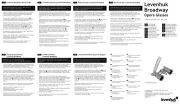
11 September 2025
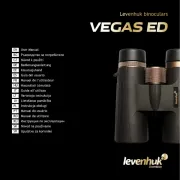
5 Augustus 2025

22 Juli 2025

22 Juli 2025

21 Juli 2025
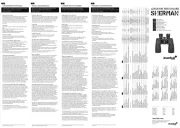
21 Juli 2025
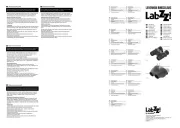
15 Juli 2025
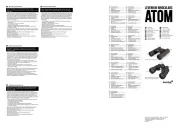
15 Juli 2025
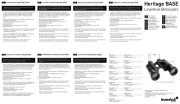
15 Juli 2025
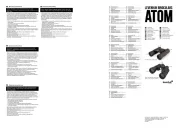
15 Juli 2025
Handleiding Verrekijker
- Hama
- Crivit
- Rexing
- Eagle Optics
- Zeiss
- Minox
- Yukon
- Explore Scientific
- Leica
- Bynolyt
- Rollei
- Auriol
- Rocktrail
- Swarovski Optik
- Bushnell
Nieuwste handleidingen voor Verrekijker
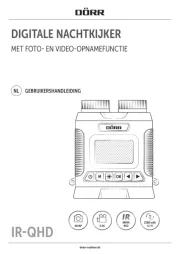
1 September 2025
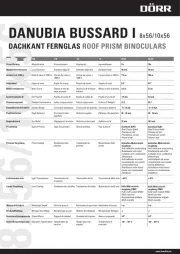
25 Augustus 2025
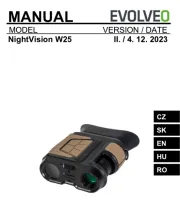
15 Augustus 2025
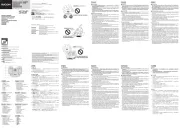
21 Juli 2025
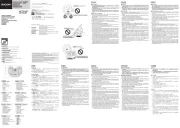
21 Juli 2025
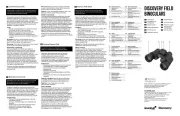
15 Juli 2025
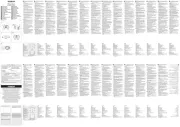
15 Juli 2025
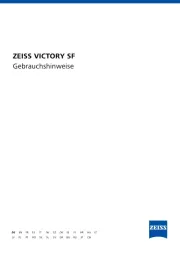
14 Juli 2025
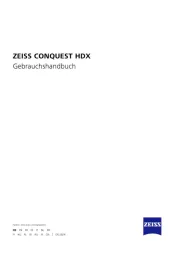
14 Juli 2025
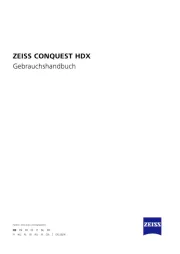
14 Juli 2025